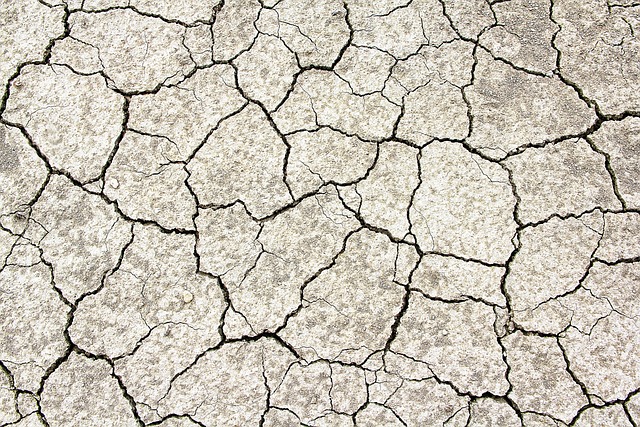Understanding foundation slab crack types (hairline, settling, structural) and causes (ground movement, settlement, construction flaws, temperature shifts) is crucial for effective repair. Evaluating crack severity, size, pattern, and location determines the best repair method, from epoxy injection to structural lifting. DIY repairs are suitable for minor cracks, but significant or complex issues require professional intervention. Regular maintenance, including proactive crack repair and drainage management, extends foundation slab lifespan.
Foundation slab cracks can be a common concern for homeowners, indicating potential structural issues. Understanding the causes and types of these cracks is the first step towards effective repair. This article guides you through the process, from assessing damage and choosing repair methods like epoxy injections or structural lifting, to DIY considerations and long-term maintenance tips. Learn how to tackle crack repair with the right approach, ensuring a sturdy and safe home foundation. Discover expert advice on identifying and addressing slab cracks for peace of mind.
Understanding Foundation Slab Cracks: Causes and Types

Foundation slab cracks can be a concerning issue for any homeowner, but understanding their causes and types is the first step towards effective crack repair. These cracks often appear as vertical or diagonal lines on the concrete surface and can vary in width and depth. The primary reasons behind foundation slab cracks include ground movement, settlement, poor initial construction, and changes in temperature and humidity levels.
There are several types of cracks to consider: hairline cracks, which are typically shallow and narrow; settling cracks caused by uneven soil compactation; and structural cracks resulting from significant underlying issues like unequal loading or heave. Identifying the specific crack type is crucial as it determines the appropriate crack repair method, ensuring long-lasting stability and integrity of the foundation slab.
Assessing the Damage: Identifying Crack Severity

When assessing foundation slab damage, determining crack severity is paramount for effective repair. Start by identifying the type and extent of cracks. Haunch cracks, usually shallow and wide, often result from seasonal expansion and contraction. In contrast, diagonal or vertical cracks, particularly those exceeding 1/8 inch (3 mm) in width, may signal more severe structural issues.
Visual inspection can help gauge crack severity. Deep, widening cracks or those that extend through the entire slab require immediate attention. These could indicate foundation settlement or heave, indicating more substantial problems. For accurate assessment and appropriate crack repair methods, consider professional evaluation for severe cases to ensure long-lasting stability and safety.
Repair Methods: From Epoxy Injections to Structural Lifting

When it comes to foundation slab repair, the methods can vary depending on the extent of damage and the specific needs of the structure. One common and effective approach is epoxy injection, a crack repair technique that involves filling cracks with a strong, durable epoxy resin. This method not only stops further damage but also provides long-lasting structural support. The process starts by cleaning and preparing the cracked area, then precise injections of epoxy are made to fill and seal the gaps.
For more severe cases where the slab has sunk or distorted, structural lifting might be required. This advanced crack repair technique utilizes hydraulic pumps to raise and stabilize the depressed portion of the slab, returning it to its original position. By combining these innovative repair methods, professionals can effectively address a range of foundation issues, ensuring the integrity and longevity of buildings.
Choosing the Right Approach: Factors to Consider for Crack Repair

When considering crack repair, it’s crucial to understand that no one-size-fits-all approach exists. The ideal method depends on several factors unique to each foundation slab and the extent of damage. Key considerations for effective crack repair include the size, depth, and pattern of cracks, as well as their location within the slab.
For instance, shallow cracks with a non-structural pattern might only require surface sealing or patching, while wider or deeper cracks could signal more serious issues necessitating structural repairs like underpinning or reinforcement. Understanding these factors allows for selecting the most appropriate crack repair technique, ensuring long-term stability and longevity of your foundation slab.
DIY vs Professional Repair: When to Call in Experts

When it comes to foundation slab repair, the decision between DIY and professional services depends on several factors. Many minor cracks or repairs can often be tackled by homeowners as a do-it-yourself (DIY) project, saving costs and offering a sense of accomplishment. There are numerous resources and guides available online that walk you through the process of crack repair, ensuring you have the right tools and materials. However, for more extensive damage or complex issues, it’s best to call in the experts.
Professional repairs are recommended when cracks are wider than 1/8 inch (or larger), indicate structural problems, or if there are signs of ongoing movement or shifting in the slab. Foundation specialists have advanced tools and techniques to address these challenges effectively. They can also identify potential causes like poor initial construction, soil settlement, or plumbing issues, offering long-lasting solutions rather than just temporary fixes.
Maintenance and Prevention: Long-Term Solutions for Healthy Slabs

Regular maintenance and prevention are key to ensuring the longevity of your foundation slab. One of the most common issues that lead to costly repairs is cracks in the slab. Implementing a crack repair strategy as soon as minor cracks appear can significantly extend the life of your foundation. This proactive approach involves regularly inspecting your slab for any signs of damage or distress, such as hairline cracks, uneven surfaces, or sinking areas.
Prevention also includes proper drainage and moisture management around the perimeter of your structure. Ensuring that water does not pool near the foundation can prevent erosion and further damage to the slab. Additionally, maintaining proper concrete reinforcement and using high-quality materials during initial construction can contribute to a more durable and resilient foundation slab.
